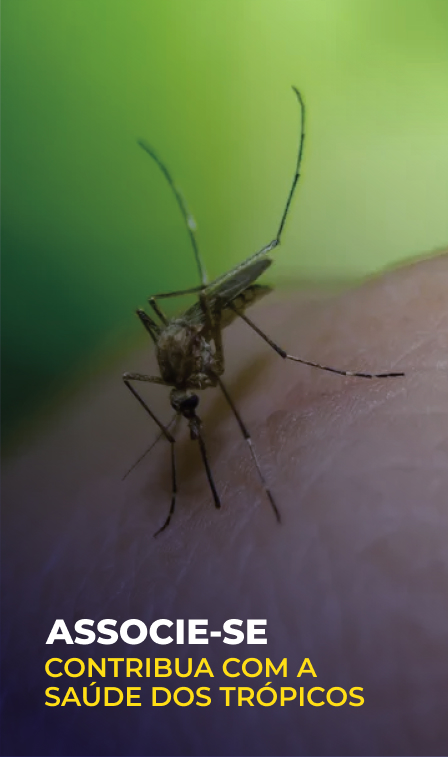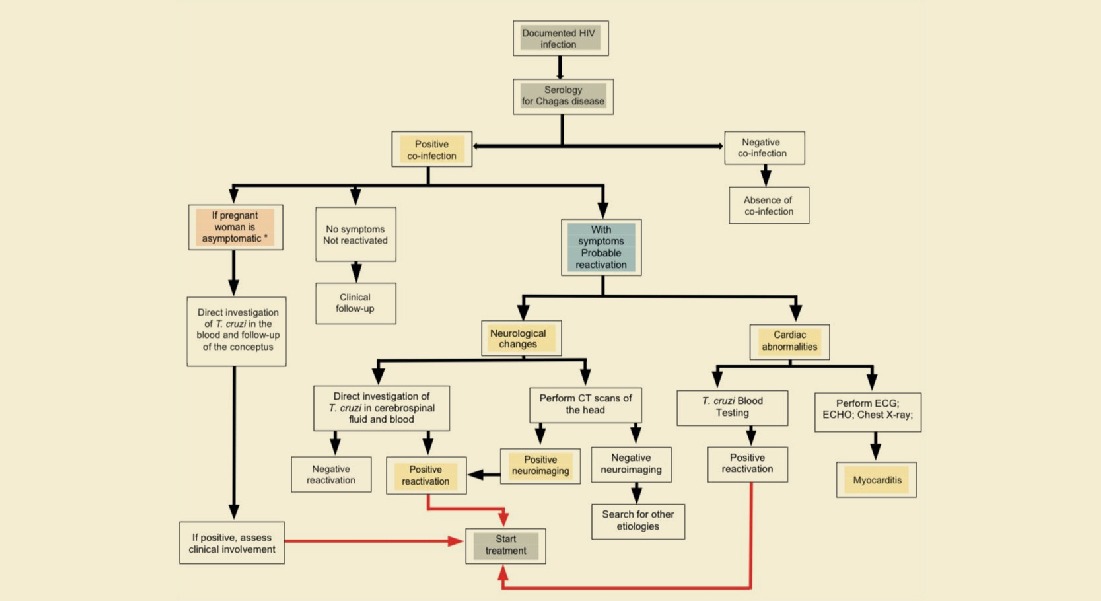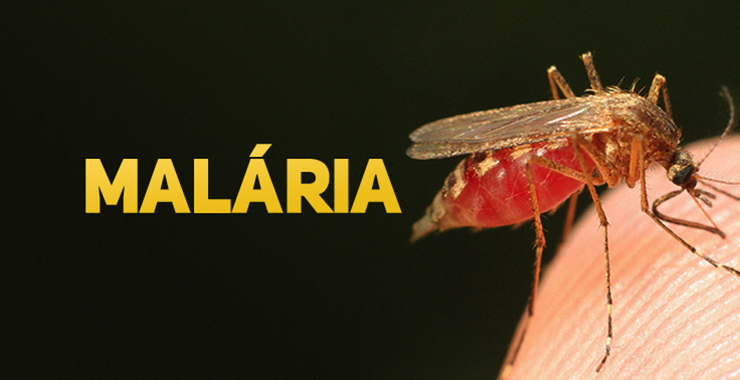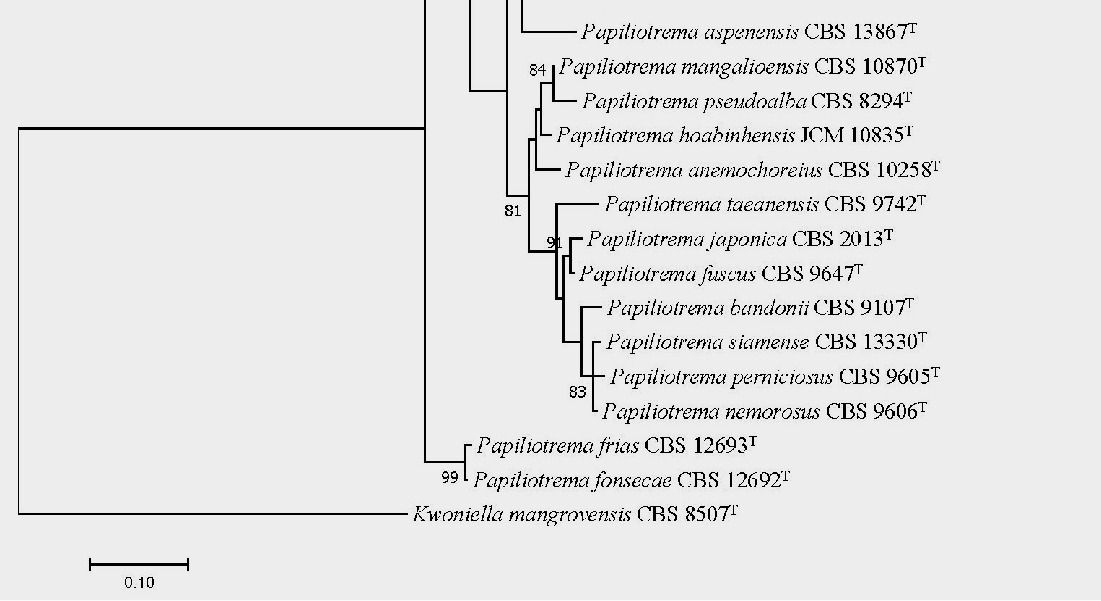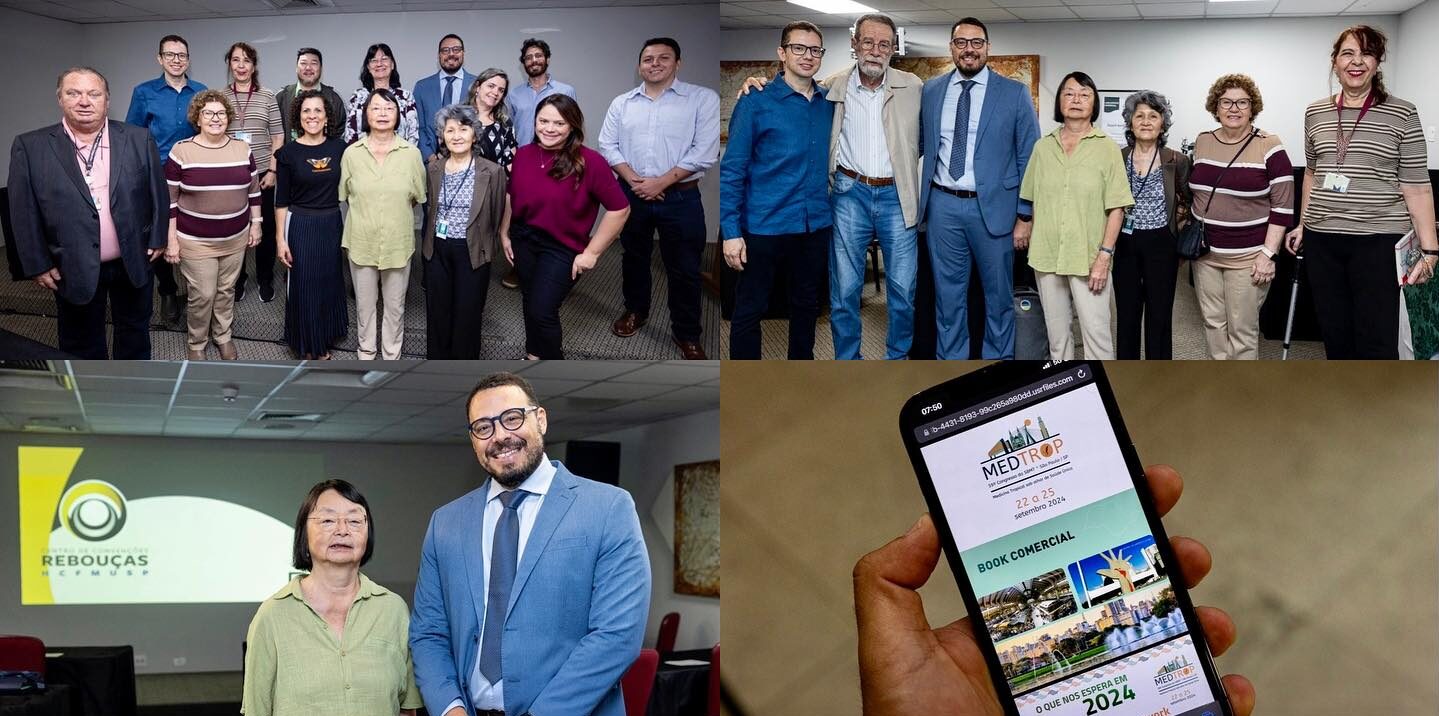
Uruguay was a country where human leishmaniasis did not exist, notes Dr. Yester Basmadjian
The rapid expansion to the south is evidently multifactorial, but clearly linked to vector expansion. Without a vector there is no active transmission of this parasite
05/06/2019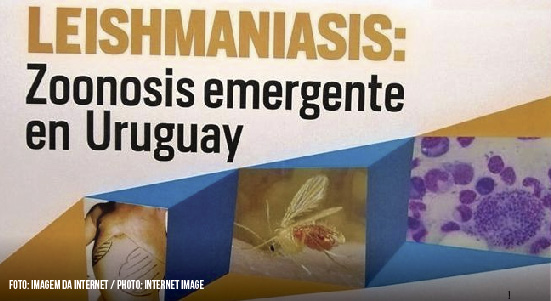
What is known, so far, is that the vector went south following the banks of the great rivers, in the case of Uruguay, the Uruguay River, being found in Bella Union and Salto. Its presence has not been detected in other places
In recent years, there has been a greater frequency of cases of visceral leishmaniasis in South America. The migration of people and domestic animals as well as the transport of goods has favored the expansion of the vector, gradually increasing its distribution towards the south of the continent. According to experts, once the sand fly is introduced to an environment and cases of canine leishmaniasis happen, human cases are expected in the following years. Recently, Uruguay, a country in which leishmaniasis, in any of its forms of presentation on a human level, did not exist, detected its first case in a child. To learn more about the subject, the Brazilian Society of Tropical Medicine (BSTM) interviewed Dr. Yester Basmadjian, a parasitologist, professor and director of the Department of Parasitology and Mycology of the Institute of Hygiene at the Faculty of Medicine of the University of the Republic (UdelaR in Spanish). Dr. Basmadjian was part of the team that described the vector in 2010 and that characterized the canine outbreak in Arenitas Blancas in 2015. Find the full interview below:
SBMT: For Uruguay it was an only imported disease, that is, cases acquired in endemic areas, until in 2010 sandflies (Lutzomyia longipalpis) were identified on the north coast, a vector for the infection, resulting in an epidemiological change that consolidates with the emergence in 2015 of autochthonous canine leishmaniasis and finally in 2018 with the first case of visceral leishmaniasis in humans. In your opinion, why cases of VL have intensified in the past few years?
Dr. Yester Basmadjian: Uruguay is a country in which Leishmaniasis, in any of its forms of presentation at a human level did not exist. It was an exotic pathology, and the few cases that were seen were cutaneous leishmaniasis, all in travelers (mostly travelers to the Middle East and American tropics).
The same can be said regarding dogs. The canine cases present and identified in Uruguay, before 2015, were all from dogs from areas of the planet where Visceral Canine Leishmaniasis is autochthonous 1. There is, however, a publication about a dog that apparently died of Leishmaniasis (post mortem diagnosis), in which no molecular study or epidemiological research was carried out 2.
Regarding the presence of sandflies, studies of the first decades of the twentieth century by Cordero et al. showed the presence of Lutzomyia gaminarai (in the Departments of Salto and Tacuarembó) and Evandromyia (Lutzomyia) cortelezzii in Montevideo, with no subsequent findings 3, 4. It is only from the year 2010, with the finding of Lutzomyia longipalpis, that the topic begins to have epidemiological relevance 5.
SBMT: In your opinion, why has pathology been expanding more and more to latitudes further south, arriving in Uruguay?
Dr. Yester Basmadjian: Visceral Leishmaniasis emerged as a new pathology in the Southern Cone of America in this new millennium. It is from the year 2000, with the outbreak in Campo Grande (Brazil) that this parasitosis spread quickly towards the South. The first case of human visceral leishmaniasis in Argentina occurred in 2006, in a child in the town of Posadas and we can safely say that in 2009 there were already infected dogs in the town of Monte Caseros, Uruguay River, mirror city of the Uruguayan town of Bella Unión.
The rapid expansion towards the south is, of course, multifactorial, but is clearly linked to the expansion of the vector. Without the vector there is no active transmission of this parasitosis.
What is known, so far, is that the vector has moved southwards along the margins of the great rivers, in our case, the Uruguay River. The localities where it was found in our country were Bella Unión (latitude -30.2 and longitude -57.6) and Salto (latitude -31,3 and longitude -57,9), not detecting its presence in other localities.
SBMT: Exploitation of forests, deforestation, migration of people from endemic areas, tourism and climate change make the disease more and more widespread. Which other factors influence the spread of the disease?
Dr. Yester Basmadjian: We have not yet identified, in our country, what factors allowed the installation of the disease. We can speak, roughly, about the change in land use that occurred in recent years. However, the disease has settled in the cities, at least for the moment. In them there is a huge offer of spaces where sandflies can reproduce without the presence of predators that fight them, and, in addition, the cities offer an enormous number of dogs, animal species for which it has food predilection L.longipalpis.
From the initial finding of L. longipalpis in the cities of Bella Unión and Salto, the search for insects, which was carried out in the later years, always showing that this species had successfully adapted to this region. Personal observations of our research group (not yet published) evidenced the finding of adult L. longipalpis with temperatures lower than the literature indicates.
SBMT: From the detection of this first case, the Ministry of Health of Uruguay implemented the actions foreseen in the Guide for diagnosis, treatment and control of visceral leishmaniasis in Uruguay. What actions would you highlight?
Dr. Yester Basmadjian: In face of the regional situation, studies were carried out in Uruguay, in a coordinated way, from the University of the Republic, to first identify the distribution of the vector, then the infection in dogs, to finally diagnose the first human cases.
After the discovery of L.longipalpis, and under a very low budget granted by a research project, we tried to identify, first, the persistence of sandfly infestation in both cities and then the search for infected dogs 6,7,8,9,10,11,12,13. Thus, we detected the first outbreak of autochthonous transmission of Leishmaniasis in dogs in our country, thus being the most austral transmission cycle known 14.
It is from the identification of the first focus that the State assumes a more active role in reference to the surveillance and control possibilities of this zoonosis. Until 2015, almost all actions and studies were carried out by researchers from the University of the Republic.
SBMT: Could you talk about the Guide for diagnosis, treatment and control of visceral leishmaniasis in Uruguay?
Dr. Yester Basmadjian: After having identified the presence of canine visceral leishmaniasis autochthonous transmission in Uruguay, the Ministry of Public Health assumed a proactive role, coordinating a team of multidisciplinary researchers and teachers (doctors, veterinarians, biologists, sanitarians, etc.), with which was drafted the first Guide for the diagnosis, treatment and control of visceral leishmaniasis in Uruguay (2016). It was made available to the public on the website of the Ministry of Public Health. It is currently being reviewed by the health authorities.
SBMT: What medicines are available in Uruguay to treat the disease?
Dr. Yester Basmadjian: Liposomal amphotericin B is available in Uruguay.
SBMT: What actions are developed by the government to avoid new cases?
Dr. Yester Basmadjian: Once the active vectoral transmission was identified in Uruguay, the Ministry of Public Health decreed that the Salto Department was on health alert. That alert lasted 1 year. The actions that were developed were the active search for canine cases, while monitoring the presence of the vector 16. The search for cases in dogs initially focused on the proximity of traps near to the sites where presence of sandflies was detected. Then, the dogs near to the sites where the first infected dogs were found, were studied in an adaptive sampling. Through this methodology, more than 600 infected dogs were identified to date. The ministerial recommendation is the placement of collars with deltamethrin and, where possible, the euthanasia of the infected animal. In 2016 the first infected dogs were identified in the city of Bella Unión.
To date, Salto and Bella Unión are the only cities with active transmission of Leishmania infantum in Uruguay.
Regarding the presence of vectors, it is studied by the placement of CDC type traps. Sampling was done at least twice a year, and in addition to sampling the cities mentioned, traps are also placed in the cities of Paysandú, Artigas and Rivera (which are the populated centers closest to the infested cities). Until now, Lutzomyia longipalpis was found only in Salto and Bella Unión 17.
From the first human case, diagnosed in December 2018, a series of modifications were established in the action: the sampling of dogs will be done in a systematized form (to be able to infer canine seroprevalence) and the search for sandflies will be held monthly, placing traps inside and in the surroundings of households.
SBMT: Do you believe that mathematical models can help and enable to focus surveillance and control actions? Why?
Dr. Yester Basmadjian: Yes, of course, they can help us focus surveillance and control. Through a study with mathematical modeling, we could infer that, if the environmental conditions are adequate, it could perfectly take be the L.longipalpis infestation up to Montevideo 18.
SBMT: How is the VL situation in the country today?
Dr. Yester Basmadjian: The current situation of Visceral Leishmaniosis in Uruguay is as follows: there is active vector transmission of Leishmania infantum in the cities of Bella Unión (Department of Artigas) and Salto (Salto Department). In the first locality there are only canine cases, while in the second has human cases. The presence of L.longipalpis is, for the time being, circumscribed to these localities.
SBMT: To date, how many cases have been reported?
Dr. Yester Basmadjian: To date, Uruguay has reported 2 cases of human visceral leishmaniasis of autochthonous transmission. A 4-year-old girl, who is in good condition, and a 33-year-old woman who passed away. Both cases were detected in the city of Salto. Recently, a third case was diagnosed, but the latter is an imported case: a Brazilian citizen who arrived in Uruguay in April of this year, from Goiás. In the 3 cases, the parasitological diagnosis was conducted by the Department of Parasitology and Mycology of the Faculty of Medicine, UDELAR and the molecular diagnosis was made at the Institut Pasteur in Montevideo.
SBMT: How many deaths? Who died?
Dr. Yester Basmadjian: The 33-year-old lady passed away.
SBMT: Are there patients undergoing treatment? If so, from where?
Dr. Yester Basmadjian: Yes, the Brazilian patient. He is admitted to Hospital de Clínicas (University Hospital) and is under treatment with Liposomal Amphotericin B.
SBMT: Would you like to add something?
Dr. Yester Basmadjian: I would like, first of all, to thank all the foreign teachers who helped us and guided us in the unfinished learning of this parasite:
Drs. Carlos Costa and Dr. Dorcas Lamounier Costa from Brazil and Dr. Oscar Daniel Salomón, from Argentina. Everyone behaved very generously, welcoming us in their workplaces and transferring their knowledge and experience in this zoonosis
And I want to make a recognition to all the colleagues at the University of the Republic who participated, from the beginning, in the study of this disease. Some are no longer in the group but made their valuable contributions in due course. Others continue to contribute from their work space.
Drs. In Veterinary Medicine (teachers): Carlos Soto, Dinora Satragno, Alejandra Lozano, Edgardo Vitale, Lorenzo Verger, Pedro Martino, Zully Hernández and a very special recognition to Dr. Eduardo Supparo, who is carrying the enormous task of fieldwork in the cities of Salto and Bella Unión under his shoulders.
Dr. in Veterinary Medicine Cirino Sequeira. I emphasize it in a special way because, without being a teacher of the University, and living in Bella Unión, she understood the problem and helped us permanently from her work space.
Drs. in Human Medicine: Selva Romero, Ana Luisa Viera.
Medical students (responsible for outreach and extension activities in schools in the endemic zone): Telma González, Jordan Bambini, and a large number of students who came to work in a timely manner.
Biologists: Andrés Cabrera, Sebastián Pita, Pablo Fresia, Hugo Coitiño and Bruno Canneva.
Molecular biologists: Drs Carlos Robello, María Eugenia Francia, Mag. Paula Faral Tello, Gonzalo Grief.
Officials of the Ministry of Public Health: Gabriela Willat, Sofia Piegas, Nataly Rodriguez.
Surely, Im forgetting someone. I apologize a thousand times for this.
REFERENCES
- Lozano, A .; Basmadjián, Y .; Vitale, E .; Satragno, D .; Canneva, B .; Verger, L .; Tort, C .; Viera, A .; Romero, S .; Ríos, C .; Lagarmilla, P. Canine Visceral Leishmaniasis. Imported cases in Uruguay, 2010-2014. In: International Symposium on Phlebotomine Sandflies. ID 122 P. ISOPS VIII. Iguazu, Argentina, 2014.
- Pacheco Da Silva, J.P.; Arredondo, C.; Tricca, G.; Pedrana, G. Leishmaniasis in Uruguay: De ion of a clinical case in canine and histopathological diagnosis. veterinaria.org/revistas/redvet. 2009
- Lamb, E.H.; Vogelsang, EG and Cossio, V. Phlebotomus gaminarai, n. sp. New species of sandfly in Uruguay IV Meeting Soc. Argentina Patol. Reg. Norte. Bulletin of the Institute of Surgical Clinic, 4: 649-652. Universidad de Buenos Aires and
- Cordero, E.H. 1930. The presence in Uruguay of two species of Diptera that are vulnerable to the genus Phlebotomus. Anales de la Facultad de Medicina, 15: 690-698, Montevideo.
- Solomon, O.D.; Basmadjian, Y .; Fernández, M.S.; Santini, M.S. Lutzomyia longipalpis in Uruguay: the first report and the potential of visceral leishmaniasis transmission. In: Mem Inst Oswaldo Cruz, Rio de Janeiro, Vol. 106 (3): 381-382, May 2011
- Basmadjián Y; Canneva B; Verger L; Vitale E; Sequeira C; Lozano A; Satragno D; Tort C; Viera A; Ríos C; Lagarmilla P; y Romero S. (2014) “Lutzomyia longipalpis in Bella Unión, Department of Artigas, Uruguay. One year of surveillance: July 2013- June 2014.” Presentado en: 8th International Symposium on Phlebotomine Sandflies, Puerto Iguazú, Misiones, Argentina.
- Verger L; Lozano A; Vitale E; Satragno D; Sequeira C; Canneva B; Basmadjián Y; Rios C; Lagarmilla P; Tort C; Viera A; Romero S. (2014) “Serological surveillance in dogs of the city of Bella Unión, a risk area for visceral leishmaniasis”. Presentado en: 8th International Symposium on Phlebotomine Sandflies, Puerto Iguazú, Misiones, Argentina.
- Basmadjián Y; Canneva B; Verger L; Lozano A; Satragno D; Supparo D; Sequeira C; Romero S; Viera A; Tort C; Ríos C; Lagarmilla P; Vitale E. (2014) Persistence of Lutzomyia longipalpis, vector of Visceral Leishmaniasis, in the city of Salto, Uruguay. Presentado en: 8th International Symposium on Phlebotomine Sandflies, Puerto Iguazú, Misiones, Argentina
- Basmadjián Y; Lozano A; Verger L; Canneva B; Satragno D; Sequeira C; Romero S; Viera A; Tort C; Rios C; Lagarmilla P; Vitale E. (2014) “Persistencia de la infestación de Lutzomyia longipalpis, vector de Leishmaniasis Visceral, en la ciudad de Bella Unión, Uruguay”. Presentado en el III Congreso Panamericano de Zoonosis. La Plata, Argentina.
- Canneva B; Verger L; Sequeira C; Lozano A; Tort, C.; Basmadjián, Y. Investigación entomológica de un sitio de captura positivo a Lutzomyia longipalpis (Diptera: Psychodidae) en el año 2010. III Congreso Uruguayo de Zoología, diciembr de 2014, Montevideo, Uruguay
- Basmadjián Y; Canneva B; Verger L; Lozano A; Satragno D; Sequeira C; Vitale E; Romero S; Viera A. ¨Lutzomyia longipalpis, vector de Leishmaniasis visceral en Uruguay, año 2015. Presented as poster. Salvador de Bahía, Brasil, 31 de octubre de 2015. XXIII Congreso Latinoamericano de Parasitología-FLAP.
- Basmadjián Y; Canneva B: Verger L; Lozano A; Satragno D; Sequeira C; Vitale E; Romero S; Viera Ana. (2015) Lutzomyia longipalpis, vector of visceral leishmaniasis in Uruguay, year 2015. Presented at the 23rd Latin American Congress of Parasitology (Latin American Federation of Parasitologists) and 24th Congress of the Brazilian Society of Parasitology. Salvador, Bahia, Brazil.
- Basmadjián Y; Viera A; Romero S; González T; Verger L; González J; Blanco O; Satragno D; Lozano A. Distribución de Lutzomyia longipalpis, vector de la Leishmaniasis visceral urbana en Uruguay, año 2016. Presentado en el IV Congreso Uruguayo de Zoología, 4 al 9 de diciembre del 2016, Maldonado, Uruguay.
- Satragno D, Faral-Tello P, Canneva B, Verger L, Lozano A, Vitale E, Greif G, Soto C, Robello C, Basmadjian Y. Autochthonous Outbreak and Expansion of Canine Visceral Leishmaniasis, Uruguay. Emerg.Infect.Dis. 2017 Mar;23(3):536-538. doi: 10.3201/eid2303.160377.
- https://www.gub.uy/ministerio-salud-publica/comunicacion/publicaciones/guia-de-diagnostico-tratamiento-y-control-de-la-leishmaniasis-visceral
- Basmadjián Y, Calegari L, Elola S, Guerrero R, Justet S, Irabedra P, Lista E, Lozano A, Solá L, Soto C, Willat G. Abordaje de la emergencia y dispersión de la Leishmaniasis en Uruguay. Presentación oral en el XXIII Congreso Latinoamericano de Parasitología-FLAP, 31 de octubre de 2015. Salvador, Bahia, Brazil.
- Basmadjián, Yester., Satragno, Dinora, Verger, Lorenzo, Faral, Paula, Supparo, Eduardo, Viera, Ana, González, Telma, Grief, Gonzalo, Robello, Carlos, Romero, Selva, Cabrera, Andres, Lozano, Alejandra, Vitale, Edgardo, Bambini, Jordan, Sequeira, Cirino, Soto, Carlos. Situación de la Leishmaniosis Visceral en Uruguay, año 2017 Presentado en el XXIV Congreso Latinoamericano de Parasitología, FLAP. Diciembre de 2017, Santiago, Chile.
- Cabrera Andrés1, Coitiño Hugo2, Lorenzo Verger3, Gonzalez Telma1, Viera Ana1, Basmadjian Yester1. Distribución geográfica potencial de Lutzomyia longipalpis, vector de Leishmaniosis visceral en Uruguay. Presentado en el XXIV Congreso Latinoamericano de Parasitología, FLAP. Diciembre de 2017, Santiago, Chile.
…





